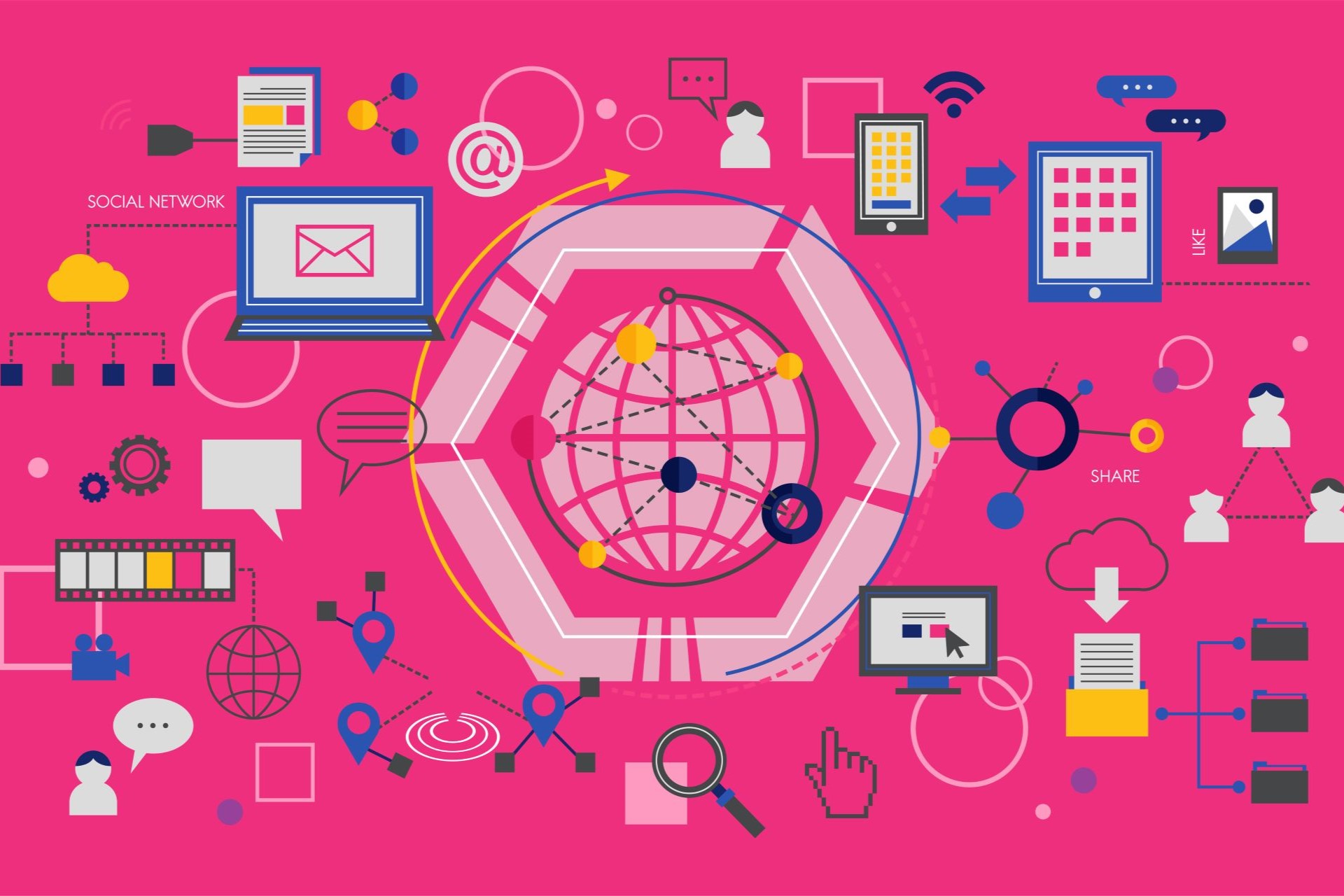In today’s digital age, internet usage has become an integral part of workplace dynamics. From conducting research to communicating with clients, employees rely heavily on the internet to perform their duties efficiently. However, unrestricted internet access can also lead to decreased productivity and security risks for businesses. This article delves into the significance of monitoring internet usage patterns in the workplace and its role in enhancing efficiency.
The Importance of Monitoring
- Ensuring Effective Time Utilization and Task Focus: Monitoring internet usage in the workplace is vital to ensure that employees are making the most of their time and concentrating on tasks relevant to their work. By tracking internet activities, employers can identify if employees are spending excessive time on non-work-related websites or tasks. This insight enables employers to intervene and redirect their focus towards more productive endeavors.
- Identifying and Addressing Productivity-Detracting Behaviors: Through monitoring, employers can pinpoint behaviors that hinder productivity. For instance, if employees are consistently engaging in lengthy social media browsing or personal email exchanges during work hours, it can significantly impact their overall productivity. Monitoring allows employers to address these behaviors promptly, whether through counseling, setting clearer expectations, or implementing targeted interventions.
- Mitigating Security Risks: Monitoring internet usage also plays a crucial role in safeguarding organizational security. By tracking employees’ online activities, employers can detect and prevent potential security threats such as malware infections and data breaches. For example, if an employee inadvertently visits a malicious website or downloads suspicious content, monitoring systems can immediately alert IT personnel, who can then take appropriate action to mitigate the risk and protect sensitive company data.
- Identifying Unauthorized Access and Downloads: Another important aspect of monitoring is the ability to identify unauthorized access to websites and downloads. Employees may unknowingly or intentionally attempt to access restricted or inappropriate content, which can pose security and compliance risks to the organization. Monitoring tools can help detect such instances in real-time, allowing employers to take proactive measures such as blocking access to unauthorized websites or restricting download permissions to mitigate potential threats.
In summary, the importance of monitoring internet usage in the workplace cannot be overstated. It ensures effective time utilization, enables the identification and addressing of productivity-detracting behaviors, mitigates security risks, and helps identify unauthorized access and downloads, ultimately contributing to a more productive and secure work environment.
Common Internet Usage Patterns
Several common internet usage patterns can impact workplace efficiency. Social media browsing, personal emails, and online shopping are among the most prevalent. While occasional breaks are essential for employee well-being, excessive indulgence in non-work-related activities can lead to distractions and time wastage.
| Common Internet Usage Patterns | Impact on Workplace Efficiency | Examples |
| Social Media Browsing | Excessive indulgence can lead | – Spending hours scrolling through social media feeds during work hours. |
| to distractions and time | – Checking social media notifications frequently, interrupting workflow. | |
| wastage. | – Engaging in lengthy conversations on social media platforms instead of focusing on tasks. | |
| Personal Emails | Constantly checking personal | – Spending significant time reading and responding to personal emails. |
| emails can detract from | – Getting distracted by personal email notifications popping up frequently. | |
| productivity. | – Engaging in lengthy email exchanges unrelated to work tasks. | |
| Online Shopping | Shopping online during work | – Spending time browsing e-commerce websites for personal purchases. |
| hours can lead to procrastination | – Making online purchases during work hours, taking time away from tasks. | |
| and a decline in productivity. | – Getting caught up in online shopping deals and discounts instead of focusing on work. |
This table provides a detailed breakdown of common internet usage patterns, their impact on workplace efficiency, and examples illustrating each pattern’s effect on employee productivity.
The Role of Monitoring Software
- Utilization of Monitoring Software by Organizations: In response to the challenges posed by internet usage in the workplace, many organizations adopt monitoring software. These software solutions are specifically designed to track and manage employees’ internet activities during work hours. By deploying such tools, employers gain visibility into how employees utilize online resources, allowing for better management of productivity and security concerns.
- Insights Provided by Monitoring Software: Monitoring software offers comprehensive insights into various aspects of employees’ online behavior. This includes details such as the specific websites visited, applications accessed, and the amount of time spent on different online activities. Additionally, some advanced monitoring tools may provide data on the frequency and duration of breaks taken by employees, helping employers identify patterns and trends in internet usage.
- Identification of Patterns and Trends: One of the primary functions of monitoring software is to identify patterns and trends in employees’ internet usage. By analyzing the data collected over time, employers can discern recurring behaviors or activities that may be impacting productivity or security. For example, if a significant portion of employees regularly visit social media sites during work hours, it may indicate a need for intervention to minimize distractions and enhance focus on work-related tasks.
- Implementation of Productivity-Enhancing Strategies: Armed with insights from monitoring software, employers can implement targeted strategies to improve productivity and reduce distractions in the workplace. For instance, based on data indicating frequent visits to non-work-related websites, employers may choose to implement website blocking or time management policies to limit access during designated work hours. Similarly, identifying peak times of internet usage can help employers schedule tasks or meetings more effectively to optimize productivity.
In summary, monitoring software plays a crucial role in helping organizations track and manage internet usage in the workplace. By providing detailed insights into employees’ online activities, identifying patterns and trends, and facilitating the implementation of productivity-enhancing strategies, these tools contribute to a more efficient and focused work environment.
Balancing Privacy and Oversight
Monitoring internet usage can undoubtedly enhance workplace efficiency, but it’s imperative to maintain a delicate balance between oversight and employee privacy. Employees may understandably feel apprehensive about their online activities being monitored, as it can evoke feelings of being constantly watched or micromanaged. This concern over privacy invasion can lead to decreased morale and trust within the workplace, ultimately undermining the effectiveness of monitoring efforts.
To address these concerns, employers must prioritize transparent communication regarding monitoring policies. Openly discussing the reasons behind monitoring initiatives and emphasizing their role in optimizing productivity and ensuring network security can help alleviate employee anxieties. Additionally, providing clear guidelines on what types of internet usage are acceptable and what actions may trigger monitoring can empower employees to make informed decisions about their online activities.
Furthermore, organizations should implement safeguards to protect employee privacy while still achieving monitoring objectives. This may involve anonymizing data collected through monitoring tools or restricting access to sensitive information to authorized personnel only. By demonstrating a commitment to respecting employee privacy rights, employers can foster a culture of trust and accountability within the workplace.
Ultimately, striking a balance between oversight and privacy is essential for the successful implementation of internet monitoring initiatives. By proactively addressing employee concerns, establishing clear policies, and respecting privacy rights, organizations can maximize the benefits of monitoring while preserving employee morale and trust.
Best Practices for Monitoring
Implementing effective internet usage monitoring requires more than just deploying software; it necessitates the establishment of comprehensive policies and practices. Organizations should begin by clearly outlining acceptable internet use guidelines, emphasizing the importance of maintaining a productive work environment while respecting employee privacy.
Communication is key in ensuring that employees understand the rationale behind monitoring efforts and the consequences of violating established policies. Providing regular training sessions on safe internet practices and the implications of non-compliance can help reinforce these expectations and promote a culture of accountability.
Additionally, organizations should adopt a proactive approach to monitoring, focusing on identifying and addressing potential productivity challenges before they escalate. This may involve leveraging monitoring data to identify trends in internet usage patterns and implementing targeted interventions or support measures as needed.
Moreover, fostering a culture of trust and open communication is essential for successful monitoring implementation. Employees should feel comfortable raising concerns or seeking clarification about monitoring policies without fear of reprisal. By encouraging transparency and collaboration, organizations can create an environment where monitoring serves as a tool for enhancing productivity rather than as a means of surveillance.
Future Trends in Monitoring
Looking ahead, advancements in technology are likely to shape the future of internet monitoring in the workplace. Predictive analytics and machine learning algorithms will enable organizations to anticipate and address potential productivity issues proactively. Additionally, the integration of monitoring tools with other business systems will provide comprehensive insights into employee behavior and workflow patterns.
In conclusion, analyzing internet usage patterns and implementing monitoring solutions are essential steps towards enhancing workplace efficiency. By tracking and managing internet activities, organizations can ensure that employees remain focused on work-related tasks while safeguarding against security risks. However, it is crucial to balance oversight with respect for employee privacy and to communicate transparently about monitoring policies.
FAQs
- Is internet monitoring legal in the workplace?
- Yes, as long as employers comply with relevant privacy laws and regulations.
- Can internet monitoring improve employee productivity?
- Yes, by identifying and addressing distractions and time-wasting activities.
- How can employers communicate monitoring policies to employees?
- Through clear and concise written policies, employee training, and open dialogue.
- Are there any privacy concerns associated with internet monitoring?
- Yes, employees may feel their privacy is being invaded, so it’s essential to address these concerns transparently.
- What are some alternatives to internet monitoring for enhancing workplace efficiency?
- Providing clear expectations and goals, offering incentives for productivity, and fostering a positive work environment can also improve efficiency.




